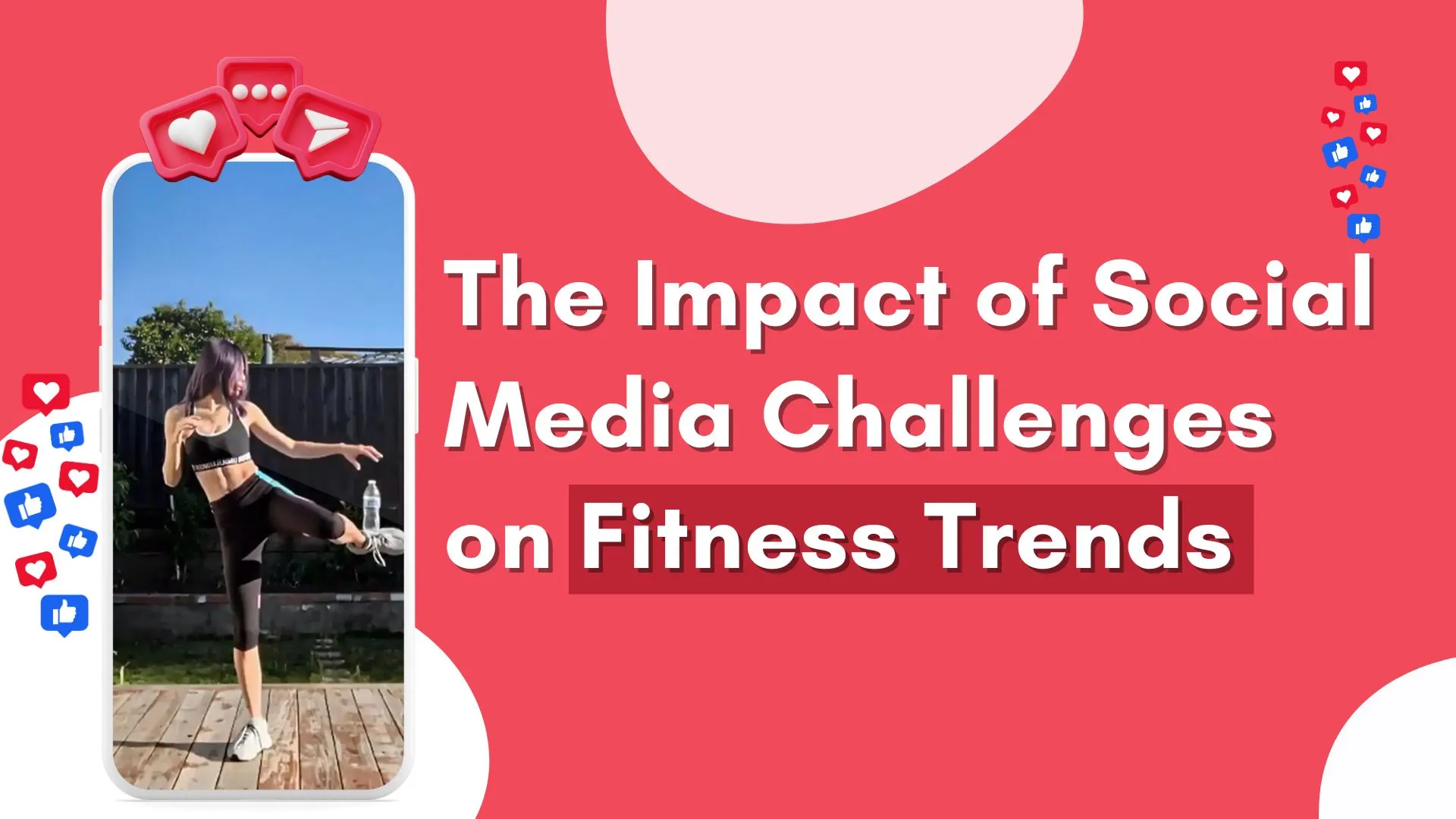The Impact of Social Media Challenges on Fitness Trends

Impact of Social Media Challenges on Fitness Trends
Social media used to be a medium for social interaction, however over the past decade it has evolved into a source of inspiration for fitness. This digital progress has given rise to some very interesting phenomena, one of which is the popularity of social media fitness challenges and games. These trends have drastically altered how some individuals approach fitness goals; having positive and negative consequences affecting personal well-being and fitness.
The Rise of Fitness Challenges on Social Media
In recent years, fitness challenges have taken social media by storm. From the 30-day squat challenge to the viral #PushUpChallenge and #75DaysHardChallenge, these trends are motivating people around the globe to get moving. But what's behind this surge in popularity? Let's dive into the factors driving the rise of fitness challenges on social media.
Positive Impacts of Fitness Challenges
- Motivation and Accountability: Fitness challenges provide a structured goal that can motivate individuals to start and maintain an exercise routine. They also act as witness of progress since sometimes contenders make their steps known concerning improvement by other persons tracking them.
- Community and Support: The involvement in a fitness challenge is bringing together people, who are of the same opinion, and in this way, creating a helpful community. This sense of companionship or company may improve commitment and give emotional backing; therefore making getting fit an interesting undertaking.
- Variety and Fun: Fitness challenges can add variety to your regular workout routines so that you don't get bored doing the same thing every time you hit the gym. The gamification of exercise through these challenges makes fitness fun and approachable.
- Education and Awareness: Fitness experts prepare a lot of training hurdles with good lessons on correct technique and healthy practicing. Best understanding therefore lets them develop better ways to be fit.
Negative Impacts of Fitness Challenges
- Risk of Injury:Safety is not always kept in mind in every fitness challenge. In some cases, participants are pushed into carrying out physical exercises exceeding what their bodies can handle, thus enhancing the prospects of damages being caused. Without proper guidance, individuals might adopt incorrect techniques that can lead to long-term health issues.
- Unrealistic Expectations: The portrayal of fitness challenges on social media often features influencers with highly fit physiques, setting unrealistic standards for the average person. This can lead to frustration and a sense of failure if participants do not see similar results.
- Short-Term Focus: Many fitness challenges last for a specific period, such as 30 days. While they can kick start a fitness routine, the short-term focus may not promote long-lasting lifestyle changes.They tend to return to their earlier ways at the end of the challenge.
- Peer Pressure and Comparison: The competitive nature of social media can create pressure to perform and compare oneself to others. This can lead to negative self-image and unhealthy behaviors, as individuals strive to match the perceived success of their peers.
Balancing the Impact
Individuals should tackle social media fitness challenges with a balanced mindset to get the advantages while minimizing the negatives. Here are some useful tips:
- Choose Wisely: Choose problems that are designed by fitness professionals with high credibility and match your level of fitness. Safety and gradual progress are more important than extreme results.
- Listen to Your Body: Listen to what your body is telling you and abstain from forcing yourself to do too much. If a challenge feels too intense, modify the exercises or take breaks as needed.
- Focus on Long-Term Goals: Make use of fitness challenges as a starting point, however, focus on integrating habits that are sustainable into your everyday life. This means that you should set for yourself objectives that can last longer than just the time frame provided for by the challenge.
- Seek Professional Guidance: You should always consult an expert to make sure you are doing exercises correctly while avoiding accidents; he/she will also give you personalized advice which in turn will help you achieve optimal outcomes without getting injured.
Conclusion
Contemporary fitness trends have been greatly influenced by social media-based fitness challenges and games. They provide motivation, community, and variety that make fitness goals more attainable and fun. Nonetheless, these activities must be approached with caution for their potential risks must be understood while encouraging healthy long-term lifestyles. Striking this fine line would enable one to take advantage of social media’s impact on one’s health and fitness path without necessarily exposing oneself to harm.
Check out Tigbar - The Ultimate Challenge App, to discover and participate in your favourite fitness challenges and connect with your fitness crew!
Share this article